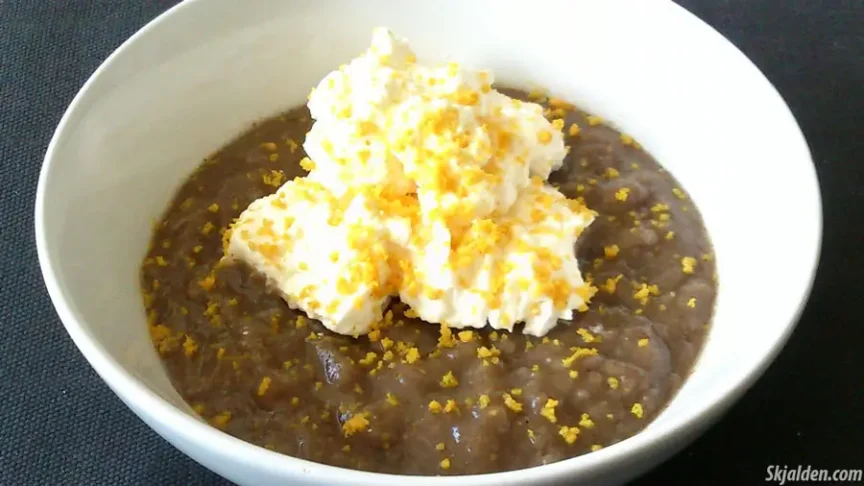In the cozy corners of Danish kitchens, a humble yet beloved dish called Øllebrød (beer bread) has been warming hearts and bellies for centuries. This traditional Danish dish, a hearty porridge made from rye bread and beer, is a testament to the Danish knack for creating simple, nutritious, and delicious meals from basic ingredients. Øllebrød, with its slightly tangy and sweet caramel flavor, is not just a dish; it’s a slice of Danish heritage served in a bowl.
Historical Backdrop of Øllebrød
The origins of Øllebrød intertwine with the history of Danish cuisine. In the medieval era, when food conservation was crucial, Øllebrød emerged as a practical method to utilize leftover rye bread, a staple in Danish households. The addition of beer, another common staple, transformed these simple ingredients into a nourishing meal. This practice reflects the ingenuity of the times and the Danish approach to sustainable living.
During the 13th century, as the concept of a morning meal became more prevalent in Denmark, Øllebrød likely evolved from a rudimentary mix of bread dipped in warm beer to a more refined porridge. This change in eating habits marks a significant shift in the culinary landscape of Denmark, with Øllebrød at its heart.
Øllebrød Beyond Borders
While Øllebrød is essentially Danish, its influence and variations have crossed into neighboring regions. It has been a part of Scanian cuisine, a testament to the shared culinary heritage of this region with Denmark. The dish’s essence, utilizing bread and beer, is a common thread in many European cultures, from the English ‘sops’ to the French ‘potages’. Each culture has its unique take, but the foundational concept remains the same – transforming bread with liquid into a comforting meal.
The key to an authentic Øllebrød lies in its ingredients. Traditional rye bread, preferably of fine-ground flour, is the backbone of this dish. While the modern trend of adding whole grains like sunflower or pumpkin seeds can add texture, purists might prefer the smoother, classic version. The choice of beer also plays a crucial role, as it imparts the distinctive flavor that defines Øllebrød.
Over time, Øllebrød has seen variations in its recipe. Some prefer to add a hint of lemon peel, orange peel, or vanilla for a subtle twist. However, many Danes hold firm to the traditional recipe, valuing the authentic taste of this historic dish.
Historically, Øllebrød was a versatile dish, served unsweetened and eaten at any meal. Today, it’s sweetened with sugar and is sometimes but rarely enjoyed as a breakfast dish, accompanied by milk, cream, or even a dollop of whipped cream. This evolution from a staple in every meal to a predominantly breakfast dish mirrors the changing dietary patterns and lifestyles.
Image credit: RhinoMind
